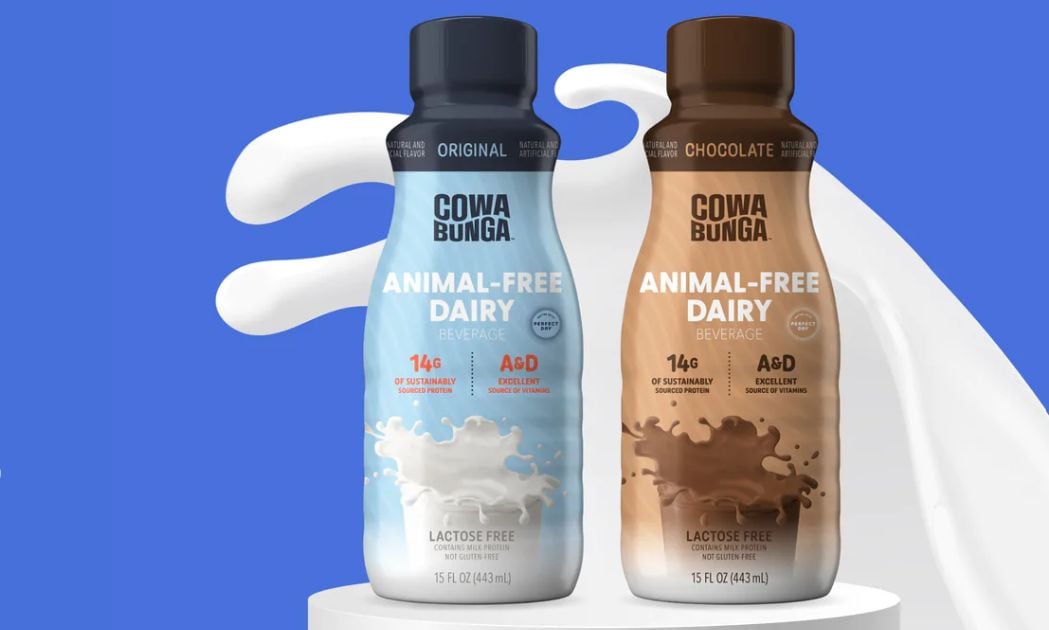Key takeaways
- The Dairy Pride Act aims to restrict the use of dairy descriptors by plant-based alternatives, citing consumer confusion and the need to protect dairy farmers.
- A renewed push for the bill to succeed aligns with a broader political climate advocating for less processed foods, potentially favoring the dairy industry’s goals.
- The MAHA report, endorsed by Robert F. Kennedy Jr., promotes traditional dairy as a key component of a healthy diet.
It’s been eight years since Dairy Pride Act* was first introduced in Congress as US dairy sought to curb alt dairy manufacturers’ use of dairy descriptors – such as ‘yogurt’, ‘milk’, or ‘cheese’ – on products like plant-based alternatives.
“The trend in mislabeling is expanding each year, and needs to be corrected,” senator Tammy Baldwin, who sponsored the 2017 bill, argued at the time.
The reason for the discrepancy was that the US Food and Drug Administration (FDA) had failed to reinforce its own rules on standards of identity – which define dairy products as being from animals, the Wisconsin senator added.
“This hurts dairy farmers that work tirelessly to ensure their dairy products meet FDA standards and provide the public with nutritious food,” she said. “It has also led to the proliferation of mislabeled plant-based alternative products that contain a range of ingredients and nutrients that are often not equivalent to the nutrition content of dairy products.”
In the following years, dairy and alt dairy have remained at loggerheads over the issue. Alt dairy advocates have argued that such legislation would stifle competition, with traditional dairy dominating the market while alternatives form around 10% of it; and that consumers aren’t reasonably misled about what they’re buying.
Dairy Pride Act bill drew around 12,000 comments during its first public consultation in 2018, but was shelved and reintroduced in the 117th Congress in 2021/22. That time around, it was read twice but ultimately referred to the Committee on Health, Education, Labor, and Pensions.
The debate on what dairy alternatives should be allowed to say on pack raged on. The FDA set out to provide a best-practice labeling guidance on plant-based milk alternatives in 2023. The federal agency consulted with industry and the public, and reviewed consumer and nutritional research.
A draft, released in January 2025, recommended that plant-based milk brands should incorporate a voluntary nutrition label that highlights any nutritional differences between a plant-based product and a dairy-based one, to enable shoppers to make an informed choice.
The FDA also found that while consumers understood that dairy and plant-based alternatives were different products, shoppers were less likely to know how a plant-based milk differs nutritionally from dairy. The federal agency thought that the inclusion of descriptors such as ‘milk’ could foster “a more favorable perception of plant-based milk alternatives’ nutritional content compared to the use of terms like ‘drink’ or ‘beverage’”.
What is Dairy Pride Act about?
The bill seeks to prohibit the sale of any food that uses the market name of a dairy product (such as milk, yogurt, or cream cheese) unless the food (1) is the milk of a hooved animal, (2) is derived from such milk, or (3) contains such milk as a primary ingredient.
But the regulator stopped short of mandating that alt dairy should not use dairy descriptors. Ultimately, the guidance did not establish any legally enforceable actions – and it is unclear if the market ever embraced the regulator’s voluntary nutrition labeling scheme.
In mid-2025, Dairy Pride Act was introduced by a bipartisan coalition comprising senators Peter Welch (D-Vt. And a member of the Senate Agriculture Committee), Tammy Baldwin (D-Wis.), Jim Risch (R-Idaho) and Susan Collins (R-Maine).
The objectives are the same: but the current political climate dominated by a pushback against processed foods may give US dairy hope that this time, the debate will result in action.
From MAHA to Dairy Pride
US health secretary Robert F. Kennedy Jr. favors the inclusion of more dairy into the new Dietary Guidelines for Americans. He has also admitted an appetite for raw milk – which cannot be legally sold interstate and poses proven health risks.
Kennedy’s Make America Healthy Again (MAHA) report highlights dairy as a nutritional powerhouse; supports the inclusion of whole milk and full-fat dairy in children’s diets; and argues that saturated fat in dairy is not inherently harmful. The report also advocates for traditional dairy as a cornerstone of a healthy children’s diet and calls for a return to minimally processed foods.
While MAHA does not explicitly critique plant-based dairy alternatives, it does suggest that whole foods (like traditional dairy) could be superior to fortified foods. Most plant-based dairy alternatives require fortification, making it difficult for such products to be both ‘minimally-processed’ and ‘nutritionally equivalent’ in the way that the report’s framework considers it.

However, fortification isn’t inherently bad. The World Health Organization recommends the practice “as a powerful evidence-informed and cost-effective intervention to fight vitamin and mineral deficiencies, including iodine deficiency disorders, anaemia and iron deficiency”. Globally, mandatory food fortification legally obliges food producers to fortify products such as milk with Vitamin D or salt with iodine.
With Kennedy Jr. keen to promote whole foods over processed, the US dairy industry may feel it has the upper hand in its quest to secure these long-term regulatory changes on labeling. But is the Dairy Pride Act the right tool for the job?
The bill that mystifies
The bill has so far failed to make real impact; it has ‘mystified’ lawmakers due its framing as a consumer protection statute yet has persisted with this wording even after the FDA found no evidence that consumers confuse dairy-free and traditional dairy products.
Even when it comes to differences in nutritional value, the two categories’ recent market performance suggests consumers understand that, too.
Plant-based dairy sales dropped by 3.9% in unit and 2.8% in dollar terms in YTD according to recent Circana data. In 2024, whole milk consumption increased 3.2% while plant-based alternatives fell 5.9%; with sales of dairy milk rising 2% overall in the period, the market research agency reported.
This trend is linked to consumer demand for less processed products, with some alt dairy categories such as cheese still relying heavily on additives like gums, starches and fats. And last year, Circana told us some flexitarian consumers have returned to dairy, embracing categories such as lactose-free milk.
Industry voices that back the bill have expressed frustration with the FDA’s lack of enforcement of its own labeling standards. If enacted, Dairy Pride Act would give the regulator 90 days to draft a guidance on how enforcement will be carried out, and issue a final guidance no later than 180 days. This would effectively put the issue of alt dairy labeling rules close to the top of FDA’s list of priorities.
This may not be a reasonable timeframe in a climate of staffing cuts, or align well with the regulator’s key FY2025 priorities, such as the launch of a front-of-pack nutritional label.
And in the long run, the bills calls for the FDA commissioner to report on enforcement action within two years. But the Office of Inspections & Investigations – which leads the agency’s law enforcement activities – is likely to be under greater strain due to the current administration’s plans to streamline the organization. In April, around 200 inspectors were let go, though a small number were subsequently asked to return.
With dairy enjoying a moment as consumers increasingly embrace nutrient-dense foods, the success of Dairy Pride Act remains a long shot.
The bill is expected to be introduced in the House in fall 2025.
DAIRY PRIDE Act stands for ‘Defending Against Imitations and Replacements of Yogurt, milk and cheese to Promote Regular Intake of Dairy Everyday’; this publication stylizes it as ‘Dairy Pride’ for reader accessibility reasons.



